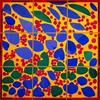ART AND ILLUSIONS MASTERPIECES OF TROMPE L’OEIL FROM ANTIQUITY TO THE PRESENT
- FLORENCE, Italy
- /
- November 10, 2009
The major international exhibition Art and Illusions: Masterpieces of trompe-l’œil from antiquity to the present at the Palazzo Strozzi, Florence, from 16 October 2009 to 24 January 2010 is exceptional not only for being the first one to focus on the subject in Italy but also for the extent to which it invites the visitor to explore both the art and the neuroscience behind the fabulous illusionistic artworks on display.
Some 140 exhibits cover the entire history of trompe-l’œil from classical Rome to the present day and, while painting predominates, the art of optical illusion is explored through other disciplines in which it has played a major role throughout European art history, including sculpture and the applied arts such as inlaid furniture, pietre dure and ceramics. It will also be notable for looking at the ways in which the senses – sight, touch, hearing, even smell – can be deceived by misleading the brain.
The exhibition is curated by Annamaria Giusti who writes: “Even though the term ‘trompe-l’œil’ is of relatively recent coinage, fascination with optical illusion goes back to ancient times and is a recurrent theme in the history of Western art. Its roots lie in the art of classical Greece and Rome. The ancients’ attitude to painting and sculpture was based on the belief that art should be imitative, or mimetic, and that is the criterion that paved the way for the conceptual and technical challenge of making what is in fact an illusion appear to be true.”
The first section of the exhibition follows In the footsteps of Zeuxis and Parrhasius illustrating the origins of painterly illusionism in Greek and Roman art, in particular the famous anecdote recounted by Pliny the Elder of a competition between two famous Greek painters, Zeuxis and Parrhasius. Zeuxis painted bunches of grapes that looked so real birds pecked at them while Parrhasius deceived even the trained eye of Zeuxis himself who, when confronted with a curtain painted by Parrhasius, tried to draw it aside to see the painting which he thought lay behind it. The popularity of this story in the 16th and 17th centuries prompted many painters including Titian to try their hand at intriguing variations on the theme.
The mimetic tradition in ancient art is represented by several Roman wall paintings but the main focus of the exhibition begins with the 15th century when the inspiring spirit of ancient art was reborn and the revolutionary innovation of scientific perspective was devised by theoreticians and artists in Italy. The encounter between Italian 15th century perspective and the meticulous rendering of reality that Flemish
artists were developing at the same time led to the birth of true trompe-l’œil, a painted image intended to deceive. The Flemish masters in the late 15th and early 16th centuries were the first to adopt the still life as a subject for their painting and paved the way for the popularity and spread of a genre that was to reach new heights in the 17th century.
When does naturalism in painting cross over into optical deception? Still Life or Trompe-l’œil? attempts to answer by juxtaposing pictures of similar subjects from both perspectives. A classic 17th century still life with fruit is hung beside one painted by Cornelis Gijsbrechts, a 17th century Flemish painter who was a master in the art of deceptive painting. His canvas with its still life is not the subject of the painting, it is in the painting itself, where we see it hanging on a wall in the artist’s studio, a corner of the canvas peeling away from its frame.
In the section Outside and Inside the Painting, the artists probe the ambiguity of the relationship between painted and real space. The painting ‘absorbs’ real accessories from the space around it such as the paper it is wrapped in or the picture frame, as seen in a panel by Francesco del Cossa (c.1435-c.1477). In a still life with birds by the Flemish painter Michael Bechtel, the label with its caption has become part of the picture. St Mark the Evangelist by Andrea Mantegna (c.1431-1506) is one of the very first instances of this technique and four centuries later the distraught-looking boy painted by Catalan artist Pere Borrell del Caso in 1874 is clutching the frame as though he were trying to escape from the canvas.
The next section is devoted to Wunderkammer: the Cabinet of Curiosities, cabinets that open their illusory inner spaces to hold everyday objects or sophisticated collections of objets d’art and natural curiosities. These include a masterpiece of the genre, a painting of the scarabattolo or glass cabinet which belonged to Grand Prince Ferdinando de’ Medici. Painted in Florence in the second half of the 17th century by Domenico Remps, it depicts both naturalia and artificialia from the Medici collections. Some of these objects have been traced and are also on show in the exhibition including a bizarre skull with coral branches and various turned ivory objects on loan from the Museo degli Argenti.
Just as trompe-l’œil objects can be stored away in cupboards or cabinets, they can hang on the wall as they would in real life. This is another of the more common themes in trompe-l’œil art which began with the wall decorations in the Roman domus. The section entitled Suspended Between Reality and Illusion explores this genre, showing false walls or doors from which hang the sumptuous accessories of court life, or the more modest accoutrements of everyday working life. Cabinets and hooked panels with objects hanging from them continued to test the skill of artists throughout the centuries, appearing in more everyday versions, many of them tinged with irony, by painters of the American school in the late 19th century. Their number includes such masters as John Frederick Peto, William Harnett and John Haberle and the exhibition offers visitors a rare opportunity to view their work in Europe. A deliberate provocation and a masterly piece of deception is the cabinet painted by French realist artist Henri Cadiou (1906-1989) who counters the sophistication of his 17th century forerunners and the bourgeois self-possession of his 19th century predecessors with the proletarian reality of the cabinet/wardrobe of a labourer, whose objet d’art is a pin-up.
As far back as the 15th century, painters were fond of depicting paper objects hanging on walls. Indeed the theme enjoyed such currency that a whole section entitled Playing with Cards has been devoted to it. Letters, bills, folders, etchings, printed sheets and playing cards lend themselves to imaginative combinations and simulations not only in paintings but also in tables in wood, scagliola or semi-precious stones portraying an assortment of papers and documents lying on them to trick the viewer who is prompted to reach out and seize objects that cannot be grasped.
In the section entitled Domestic Mirages, the ultimate illusional challenge of portraying people and animals is addressed. Two-dimensional Sculpture identifies another thematic vein in illusionistic painting. Over the centuries, artists have used monochome figures painted on canvas or wood to deceive the viewer into thinking that he is looking at sculptures or marble bas-reliefs.
The largest section of the exhibition Self-Portrait of an Illusion is devoted to easel painting, the ultimate art of deception. There are still lifes showing the tools of the painter’s trade in keeping with the laws of illusory artifice and more explicit vanitates where, amid the brushes and palettes, we can perceive skulls which are sometimes directly displayed by the artists in their trompe-l’œil self-portraits. In reflecting on its own nature, painting smugly enjoys its ability to deceive but at the same time strikes a note of regret over the vanity of mere appearances. The frequency with which the theme of an empty framed picture or one seen from behind occurs from the 17th century onwards is very telling.
Beguiling Reading is a small section devoted to the illusionistic effect of decoration in manuscripts and the theme of the manuscript per se. This is exemplified by a 15th century painting that opens the pages of an illuminated codex and a wooden choir lectern with an inlaid choir book open and ready for the choristers to take up their positions.
Three-dimensional Deception comprises sculptures and objects which share a penchant for camouflage. They include the hyper-realism of wax portraits of members of the aristocracy in all their finery, a fashionable genre up to the 19th century, and the plastic ‘humanoids’ of contemporary American sculptors as well as the anatomical and botanical wax sculptures devised under the Enlightenment for teaching purposes and the playful artifice of containers shaped to resemble their contents, fashionable in the golden age of European porcelain.
The section called Materials in Disguise presents a selection of these marvels. Sumptuous embroidered silk altar frontals are really made of scagliola gypsum, stone slippers are as tantalising as they would be uncomfortable to wear, and rustic wooden buckets are as fragile as the porcelain from which they are made. Starting with classical Roman sculptures that use the natural colours of stone to imitate bronze or folds of cloth, the display also includes later pieces of porcelain that appear to be carved out of wood, and leather tiles carved in stone.
The exhibition ends with a section entitled Architectural Illusion. While architecture played a crucial and spectacular role in the art of ‘deception’, it can only be briefly evoked in this exhibition. A detached fresco in which the wall has been ‘erased’, offering a view onto lush gardens, represents a form of illusionistic decoration that originated in Rome and was behind every subsequent development in the genre. It is echoed by several detached Baroque frescoes, large-scale sketches and mock-ups for the decoration of indoor areas as well as the absorbing experiments of a number of contemporary artists.
The scientific part of the exhibition will be curated by Richard Gregory CBE, a neuropsychologist and the founder of the first interactive scientific centre in England, who has devised a special scientific visit for families and children with the cooperation of Priscilla Heard of Bristol University. As well as special family and children’s labelling there is a ‘Magician’s Hatbox’ with a wide variety of activities including close-up magic, visual illusions and card tricks. Hands-on exhibits allow visitors to explore illusions of all kinds – an Ames Room, distorting mirrors, holograms and other interactive perception exhibits – as well as the neuroscience behind them (separate press release available).
Never before has a major art exhibition, which includes works by the great masters Titian, Velásquez and Mantegna, invited visitors of all ages to explore the ways in which the human brain can be fooled, and the pleasure we gain from being taken in.
_____________________________________
Location: Palazzo Strozzi
Piazza Strozzi, 50123 Firenze (Florence), Italy
Tel. +39 055 2645155 www.palazzostrozzi.org
Promoted and produced by: Fondazione Palazzo Strozzi, Soprintendenza per il Patrimonio Storico, Artistico ed Etnoantropologico e per il Polo Museale della città di Firenze, Opificio delle Pietre Dure di Firenze
With the support of: Provincia di Firenze
Comune di Firenze
Camera di Commercio di Firenze
Associazione Partners Palazzo Strozzi
Curator: Annamaria Giusti, director of the Galleria d'Arte Moderna di Palazzo Pitti
Catalogue: Mandragora, Press Office: Elena Paoletti
T. +39 055 2654384/19, ufficiostampa@mandragora.it
Opening hours: Daily 09.00 to 20.00, Thursday 09.00 to 23.00
Last admission one hour prior to closing
Admission: Adults: €10.00; concessions: €8.50, €8.00, €7.50; schools: €4.00
Booking: Sigma CSC, tel +39 055 2469600, fax +39 055 244145,
prenotazioni@cscsigma.it; or via www.palazzostrozzi.org
How to get there: By plane: Firenze Airport www.aeroporto.firenze.it
Tel. +39 055 306 1700
By car: From north (Milan) A1 Bologna, Firenze, Firenze Nord exit, follow directions for city. From south (Rome) A1 Roma, Milano, Firenze Sud exit, follow directions for city
By train: Nearest stations are Stazione di Santa Maria Novella, Piazza del Duomo, Via Tornabuoni
Access: Lifts and wheelchair access to all areas
For further information and images, please contact:
Sue Bond Public Relations
Tel. +44 (0)1359 271085, Fax. +44 (0)1359 271934
E-mail. info@suebond.co.uk, www.suebond.co.uk
Opening hours: Daily 09.00 to 20.00, Thursday 09.00 to 23.00
Last admission one hour prior to closing
Admission: Adults: €10.00; concessions: €8.50, €8.00, €7.50; schools: €4.00
Booking: Sigma CSC, tel +39 055 2469600, fax +39 055 244145,
prenotazioni@cscsigma.it; or via www.palazzostrozzi.org
How to get there: By plane: Firenze Airport www.aeroporto.firenze.it
Tel. +39 055 306 1700
By car: From north (Milan) A1 Bologna, Firenze, Firenze Nord exit, follow directions for city. From south (Rome) A1 Roma, Milano, Firenze Sud exit, follow directions for city
By train: Nearest stations are Stazione di Santa Maria Novella, Piazza del Duomo, Via Tornabuoni
Access: Lifts and wheelchair access to all areas
For further information and images, please contact:
Sue Bond Public Relations
Tel. +44 (0)1359 271085, Fax. +44 (0)1359 271934
E-mail. info@suebond.co.uk, www.suebond.co.uk
20/10/2009
<-->


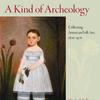



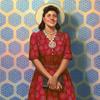
_Infinity_by_Santiago_Medina_PhotoCr100x100_c.jpg)

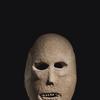
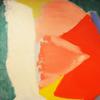


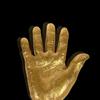
10100x100_c.jpg)

